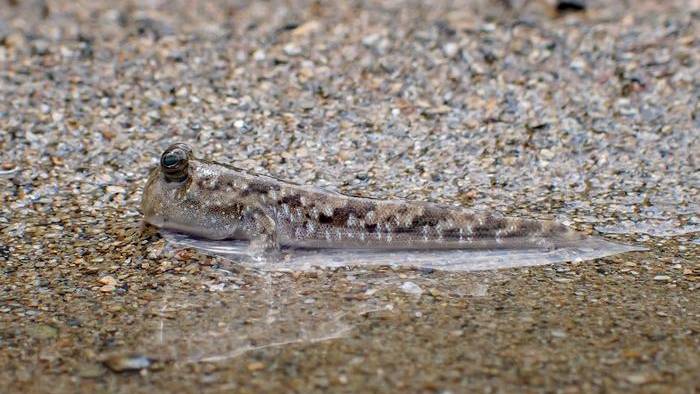A new study from the Okinawa Institute of Science and Technology (OIST) has shed light on the remarkable adaptations of mudskippers, fish that can walk on land using only their fins. This research provides valuable insights into the evolutionary transition from aquatic to terrestrial life.
Unique Adaptations for Life on Land
The barred mudskipper (Periophthalmus argentilineatus), found in Okinawa’s mangrove forests, has developed several extraordinary features to survive out of water. Dr. Fabienne Ziadi-Künzli, the study’s lead author, explains: “They are fish, but they can walk and live partly on land.”
Unlike most fish, mudskippers have eyes positioned on top of their heads, allowing for better visibility when partially submerged. Even more remarkably, they can breathe air despite lacking lungs. “Mudskippers take up oxygen via their skin, which they always have to keep moist, or through their mouth,” Dr. Ziadi-Künzli notes.
Perhaps their most striking adaptation is their ability to walk using their pectoral fins. “Mudskippers have a unique way of moving, which has not been seen in any other living amphibious fish species. It is called crutching,” says Dr. Ziadi-Künzli. This method involves swinging both pectoral fins forward simultaneously, similar to how humans use crutches.
Revealing Evolutionary Changes Through Advanced Imaging
To better understand these adaptations, the OIST team used micro-computed tomography (µCT) to create detailed 3D images of mudskipper anatomy. This technology allowed researchers to examine soft tissues and bones with unprecedented clarity.
The study revealed several key adaptations in mudskippers:
- Enlarged muscles in the pectoral fins and shoulder girdle, providing more strength for land movement.
- Replacement of some bone-connecting tendons with fascia tissue in the pectoral fins, potentially enhancing stability and forward propulsion on land.
- A unique connection between the shoulder and pelvic fin, not seen in other fish species.
- Modified fin ray bones with a rounded shape near the base, transitioning to a crescent shape at the tip, possibly increasing mechanical stability.
These findings offer valuable insights into how fish might have evolved to walk on land millions of years ago. Dr. Ziadi-Künzli notes, “We think this might give the fin more mechanical stability.” Interestingly, similar fin ray bone shapes have been observed in fossils of extinct fish that were ancestors to land-walking animals.
Why it matters: This research provides a unique window into the evolutionary process of transitioning from aquatic to terrestrial life. By studying mudskippers, scientists can better understand how early vertebrates may have adapted to life on land, shedding light on a crucial period in evolutionary history. Additionally, these insights could have implications for fields such as biomechanics and robotics, potentially inspiring new designs for amphibious technologies.
The study also highlights the importance of advanced imaging techniques in biological research. “Using these virtual dissection tools gives us a whole new perspective on the anatomy of animals – which is important work. After all, how shall we understand an organism and its evolutionary adaptations if we don’t know how they are built?” Dr. Ziadi-Künzli emphasizes.
While this research provides valuable insights, it also raises new questions. For instance, how do mudskippers develop these adaptations during their lifecycle? The team plans to investigate this by studying the mudskippers’ metamorphosis from larvae to adults, which could reveal even more about the evolutionary process.
As we continue to uncover the secrets of these remarkable fish, their ability to thrive in both aquatic and terrestrial environments serves as a testament to the incredible adaptability of life on Earth. Future research in this area may not only enhance our understanding of evolution but also inspire innovative solutions in fields ranging from medicine to environmental conservation.


